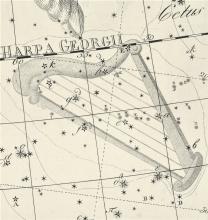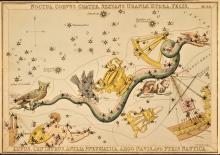Listen to today's episode of StarDate on the web the same day it airs in high-quality streaming audio without any extra ads or announcements. Choose a $8 one-month pass, or listen every day for a year for just $30.
You are here
Monoceros
Until the 17th century, European skywatchers largely ignored the area to the east of Orion. And it’s hard to blame them — that expanse of sky looks pretty empty.
By the early 1600s, though, things were changing. For one thing, European powers were exploring the world’s oceans, so navigators began producing more detailed maps of the sky. And for another, as astronomers turned their early telescopes toward the sky, they found that many “empty” regions were actually filled with amazing sights.
So 400 years ago, a new constellation was created to encompass a dark area near Orion: Monoceros, the unicorn. It’s still not much to look at with the eye alone. But a telescope reveals a triple-star system, a star that staged a big outburst, and much more.
Perhaps the most famous of the unicorn’s wonders is the Rosette Nebula, a giant cloud of gas and dust that surrounds a cluster of young stars. Through a telescope, it looks like a faint smudge of light. But in photographs, it looks like an orange or pink rose — a beautiful decoration for a faint unicorn.
To find the unicorn, first find Orion, which wheels across the south in early evening. Sirius, the brightest star in the night sky, is below Orion, with fainter Procyon farther to the hunter’s lower left. The unicorn fills the space between these bright lights — a region of the sky that’s best appreciated with a telescope.
We’ll have more about the unicorn tomorrow.
Script by Damond Benningfield






